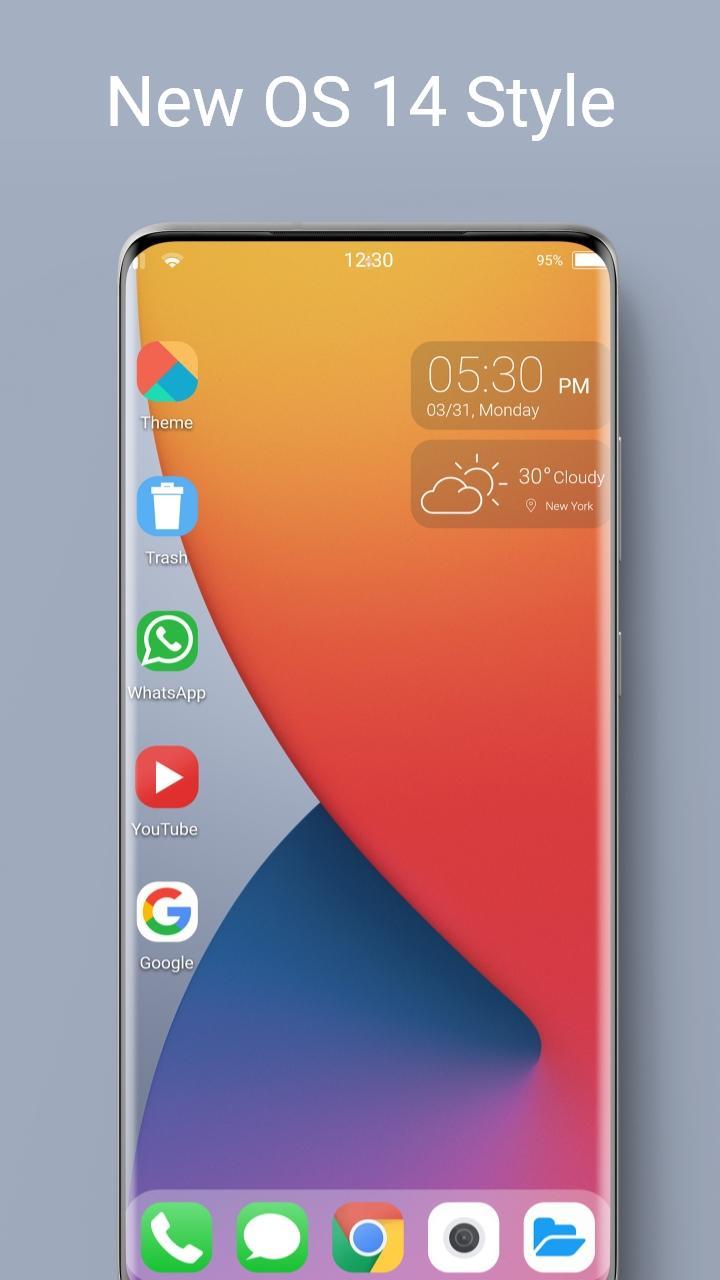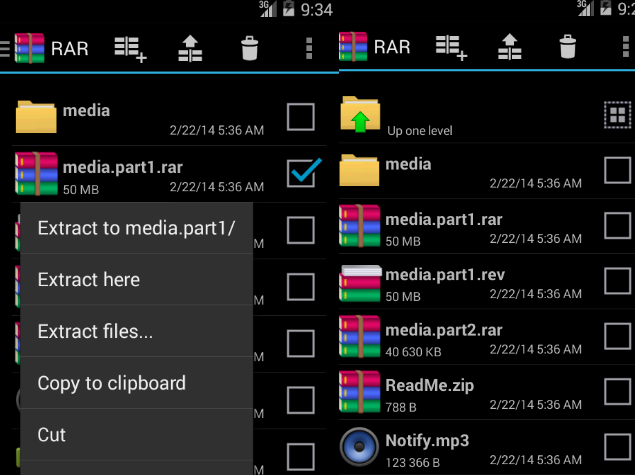- A file dialog will open and let you choose the downloaded ipsw-file. When you download the file with IE (Internet Explorer), it has a zip extension. You need to change that to.ipsw (the right extension is IPSW not ispw!!). Don’t unzip it, just change the extension (rename the.zip file in.ipsw).
- IPA Library - Browse and download iOS IPA files, tweaks and apps for iPhone, iPad and iPod Touch.
The first thing to do is download the Cider apk file. When the download completes, transfer the file to your Android device and install it. On successful installation, go to your device’s app drawer and locate the Cider application. Tap on it to launch it. This opens the emulator where you are now able to download and run iOS applications.
Android OS images use cryptographic signatures in two places:
- Each
.apkfile inside the image must be signed. Android'sPackage Manager uses an.apksignature in two ways:- When an application is replaced, it must be signed by the same key as theold application in order to get access to the old application's data. This holdstrue both for updating user apps by overwriting the
.apk, and foroverriding a system app with a newer version installed under/data. - If two or more applications want to share a user ID (so they can sharedata, etc.), they must be signed with the same key.
- When an application is replaced, it must be signed by the same key as theold application in order to get access to the old application's data. This holdstrue both for updating user apps by overwriting the
- OTA update packages must be signed with one of the keys expected by thesystem or the installation process will reject them.
Release keys
The Android tree includes test-keys underbuild/target/product/security. Building an Android OS imageusing make will sign all .apk files using thetest-keys. Since the test-keys are publicly known, anybody can sign their own.apk files with the same keys, which may allow them to replace or hijack systemapps built into your OS image. For this reason it is critical to sign anypublicly released or deployed Android OS image with a special set ofrelease-keys that only you have access to.
To generate your own unique set of release-keys, run these commands fromthe root of your Android tree:

$subject should be changed to reflect your organization'sinformation. You can use any directory, but be careful to pick alocation that is backed up and secure. Some vendors choose to encrypttheir private key with a strong passphrase and store the encrypted keyin source control; others store their release keys somewhere else entirely,such as on an air-gapped computer.
To generate a release image, use:
The sign_target_files_apks script takes a target-files.zip as input and produces a new target-files .zip inwhich all the .apk files have been signed with new keys. The newlysigned images can be found under IMAGES/ insigned-target_files.zip.
Signing OTA packages
A signed target-files zip can be converted into a signed OTA update zipusing the following procedure:Signatures and sideloading
Sideloading does not bypass recovery's normal package signatureverification mechanism—before installing a package, recovery will verify thatit is signed with one of the private keys matching the public keys stored inthe recovery partition, just as it would for a package delivered over-the-air.
Update packages received from the main system are typically verified twice:once by the main system, using theRecoverySystem.verifyPackage()method in the android API, and then again byrecovery. The RecoverySystem API checks the signature against public keysstored in the main system, in the file /system/etc/security/otacerts.zip (by default). Recovery checks the signature against public keys storedin the recovery partition RAM disk, in the file /res/keys.
By default, the target-files .zip produced by the build sets theOTA certificate to match the test key. On a released image, a differentcertificate must be used so that devices can verify the authenticity of theupdate package. Passing the -o flag tosign_target_files_apks, as shown in the previous section, replacesthe test key certificate with the release key certificate from your certsdirectory.
Normally the system image and recovery image store the same set of OTApublic keys. By adding a key to just the recovery set of keys, it ispossible to sign packages that can be installed only via sideloading(assuming the main system's update download mechanism is correctly doingverification against otacerts.zip). You can specify extra keys to beincluded only in recovery by setting the PRODUCT_EXTRA_RECOVERY_KEYSvariable in your product definition:
This includes the public keyvendor/yoyodyne/security/tardis/sideload.x509.pem in the recoverykeys file so it can install packages signedwith it. The extra key is not included in otacerts.zip though, sosystems that correctly verify downloaded packages do not invoke recovery forpackages signed with this key.
Certificates and private keys
Each key comes in two files: the certificate, which has theextension .x509.pem, and the private key, which has the extension .pk8.The private key should be kept secret and is needed to sign a package. The keymay itself be protected by a password. The certificate, incontrast, contains only the public half of the key, so it can be distributedwidely. It is used to verify a package has been signed by the correspondingprivate key.
The standard Android build uses four keys, all of which reside in build/target/product/security:
- testkey
- Generic default key for packages that do not otherwise specify a key.
- platform
- Test key for packages that are part of the core platform.
- shared
- Test key for things that are shared in the home/contacts process.
- media
- Test key for packages that are part of the media/download system.
Individual packages specify one of these keys by setting LOCAL_CERTIFICATEin their Android.mk file. (testkey is used if this variable is not set.) Youcan also specify an entirely different key by pathname, e.g.:
Now the build uses the device/yoyodyne/security/special.{x509.pem,pk8} key to sign SpecialApp.apk. The build can use only private keys thatare not password protected.
Advanced signing options

APK signing key replacement

The signing script sign_target_files_apks works on the targetfiles generated for a build. All the information on certificates and privatekeys used at build time is included in the target files. When running thesigning script to sign for release, signing keys can be replaced based on keyname or APK name.
Use the --key_mapping and --default_key_mappingsflags to specify key replacement based on key names:
- The
--key_mapping src_key=dest_keyflagspecifies the replacement for one key at a time. - The
--default_key_mappings dirflag specifies adirectory with four keys to replace all the keys inbuild/target/product/security; it's equivalent to using--key_mappingfour times to specify the mappings.
Use the--extra_apks apk_name1,apk_name2,...=key flagto specify the signing key replacements based on APK names. Ifkey is left empty, the script treats the specified APKsas pre-signed.
For the hypothetical tardis product, you need five password-protected keys:four to replace the four in build/target/product/security, and oneto replace the additional key device/yoyodyne/security/specialrequired by SpecialApp in the example above. If the keys were in the followingfiles:
Then you would sign all the apps like this:
This brings up the following:
After prompting the user for passwords for all password-protected keys, thescript re-signs all the APK files in the input target .zip with therelease keys. Before running the command, you can also set theANDROID_PW_FILE environment variable to a temporary filename; thescript then invokes your editor to allow you to enter passwords for all keys(this may be a more convenient way to enter passwords).
APEX signing key replacement
Android 10 introduces theAPEX file format for installinglower-level system modules. As explained inAPEX signing, each APEX file issigned with two keys: one for the mini file system image within an APEX and theother for the entire APEX.
When signing for release, the two signing keys for an APEX file are replacedwith release keys. The file system payload key is specified with the--extra_apex_payload flag and the entire APEX file signing key isspecified with the --extra_apks flag.
For the tardis product, assume that you have the following key configurationfor the com.android.conscrypt.apex,com.android.media.apex, andcom.android.runtime.release.apex APEX files.
And you have the following files that contain the release keys:
The following command overrides the signing keys forcom.android.runtime.release.apex andcom.android.tzdata.apex during release signing. In particular,com.android.runtime.release.apex is signed with the specifiedrelease keys (runtime_apex_container for the APEX file, andruntime_apex_payload for the file image payload).com.android.tzdata.apex is treated as pre-signed. All other APEXfiles are handled by the default configuration as listed in the target files.

Running the above command gives the following logs:
Other options
The sign_target_files_apks signing script rewrites the builddescription and fingerprint in the build properties files to reflect that thebuild is a signed build. The --tag_changes flag controls what editsare made to the fingerprint. Run the script with -h to seedocumentation on all flags.
Manually generating keys
Android uses 2048-bit RSA keys with public exponent 3. You can generatecertificate/private key pairs using the openssl tool fromopenssl.org:
Download Ios 9 Signed Zip File For Android Windows 10
The openssl pkcs8 command given above creates a .pk8 file with nopassword, suitable for use with the build system. To create a .pk8 securedwith a password (which you should do for all actual release keys), replace the-nocrypt argument with -passout stdin; then opensslwill encrypt the private key with a password read from standard input. Noprompt is printed, so if stdin is the terminal the program will appear to hangwhen it's really just waiting for you to enter a password. Other values can beused for the-passout argument to read the password from other locations; fordetails, see theopenssl documentation.
The temp.pem intermediate file contains the private key without any kind ofpassword protection, so dispose of it thoughtfully when generating releasekeys. In particular, the GNUshred utility may not be effective on network orjournaled filesystems. You can use a working directory located in a RAM disk(such as a tmpfs partition) when generating keys to ensure the intermediatesare not inadvertently exposed.
Creating image files
Once you have signed-target-files.zip, you need tocreate the image so you can put it onto a device.To create the signed image from the target files, runthe following command from the root of the Androidtree:
The resulting file,signed-img.zip, contains all the .img files.To load an image onto a device, use fastboot asfollows: If you’ve developed an application or a custom ROM for Android, then you first need to digitally sign the .apk or .zip files using a private key which is identified by the Android system before executing it. This is done to ensure that a certain file has not been modified and to prevent security breaches. Now if you want to flash an update.zip or APK file on Android which is unsigned, then you can simply sign the file and proceed.
For instance, if you’re creating an update.zip package in Titanium Backup to restore your entire Android phone apps by flashing the zip file. Then you must be aware that Titanium Backup creates an *unsigned* update.zip file which cant be flashed until it is signed.
ZipSigner 2 is a free and efficient app which overcomes this problem! Similar to jarsigner and signapk, this app allows you to easily sign update zip files, .APK, or JAR files directly on your Android device. You can do this by using one of the 4 built-in certificates, the keys include: media, platform, shared, testkey — or use auto-key selection modes.
Zip File Ios 13
This is a great app and works really well according to the user reviews. (Rating: 4.9)
Ios Zip File Download
Download ZipSigner 2

Comments are closed.